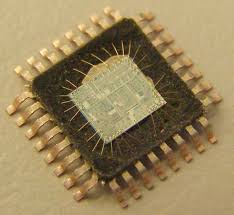Unlock STM32F100R8 ARM Chip Flash Program
The flexible 7-channel general-purpose DMA is able to manage memory-to-memory, peripheral-to-memory and memory-to-peripheral transfers. The DMA controller supports circular buffer management avoiding the generation of interrupts when the controller reaches the end of the buffer in the process of Unlock STM32F100R8 ARM Chip Flash Program.
Each channel is connected to dedicated hardware DMA requests, with support for software trigger on each channel. Configuration is made by software obtained from Crack IC dsPIC30F6010 Binary and transfer sizes between source and destination are independent.
The DMA can be used with the main peripherals: SPI, DAC, I2C, USART, all timers and ADC.
The RTC and the backup registers are supplied through a switch that takes power either on VDD supply when present or through the VBAT pin. The backup registers are ten 16-bit registers used to store 20 bytes of user application data when VDD power is not present through Break IC Software.
The real-time clock provides a set of continuously running counters which can be used with suitable software to provide a clock calendar function, and provides an alarm interrupt and a periodic interrupt through the process of Clone Microcomputer IC Microchip PIC16C54A. It is clocked by a 32.768 kHz external crystal, resonator or oscillator, the internal low power RC oscillator or the high-speed external clock divided by 128. The internal low power RC has a typical frequency of 40 kHz.
The RTC can be calibrated using an external 512 Hz output to compensate for any natural crystal deviation. The RTC features a 32-bit programmable counter for long term measurement using the Compare register to generate an alarm in order to Microchip PIC16C745 Heximal Cloning. A 20-bit prescaler is used for the time base clock and is by default configured to generate a time base of 1 second from a clock at 32.768 kHz.


